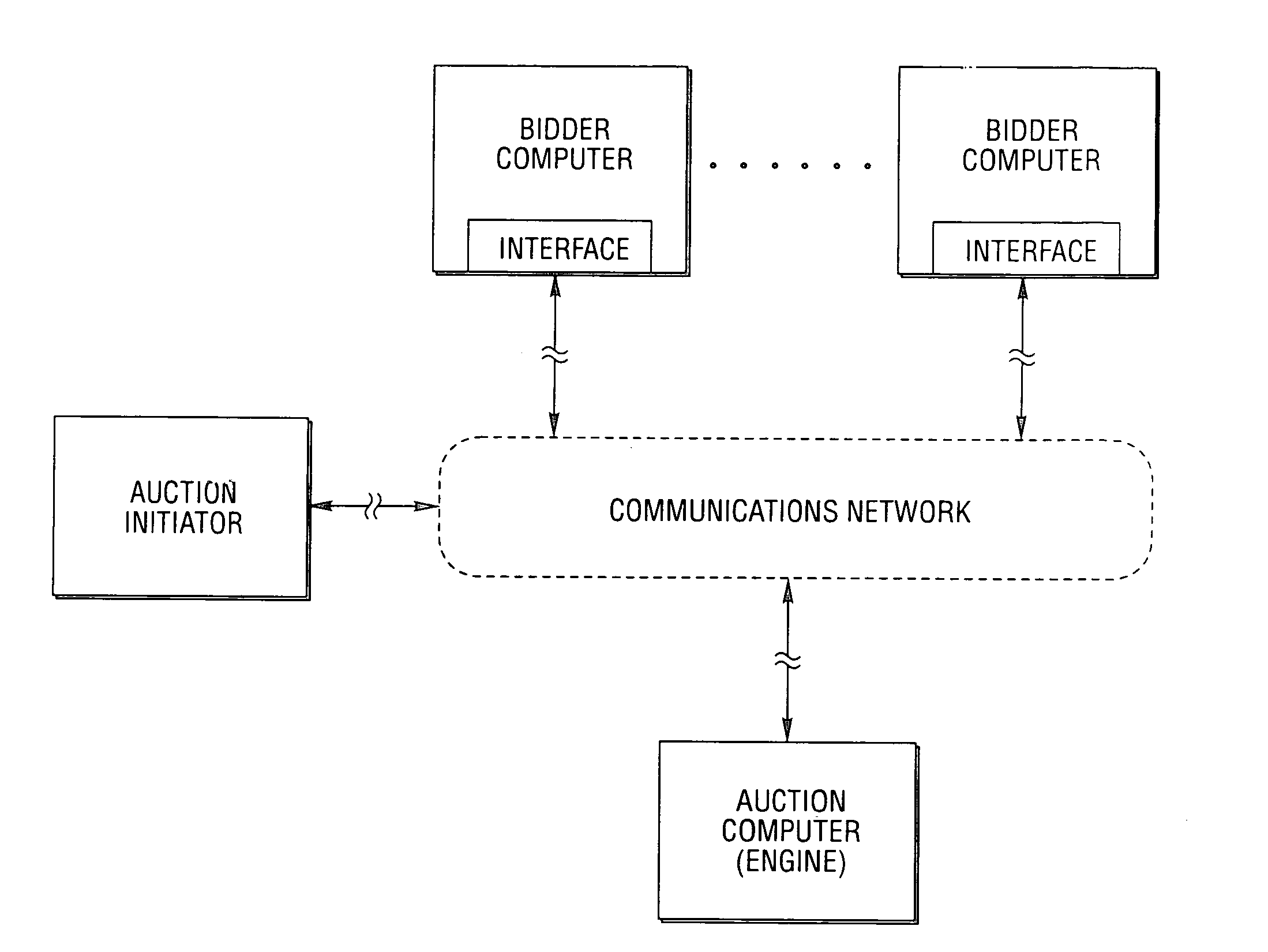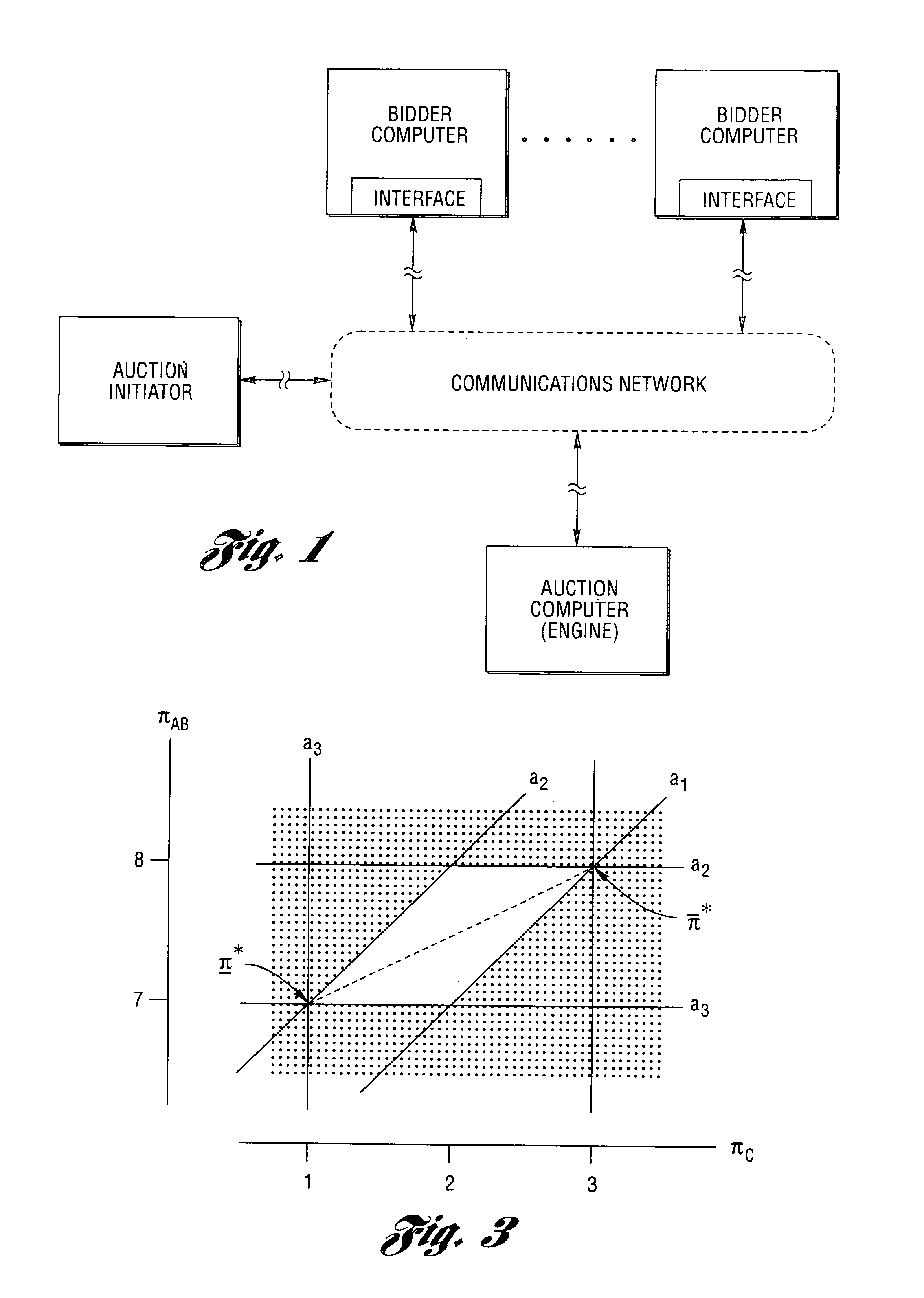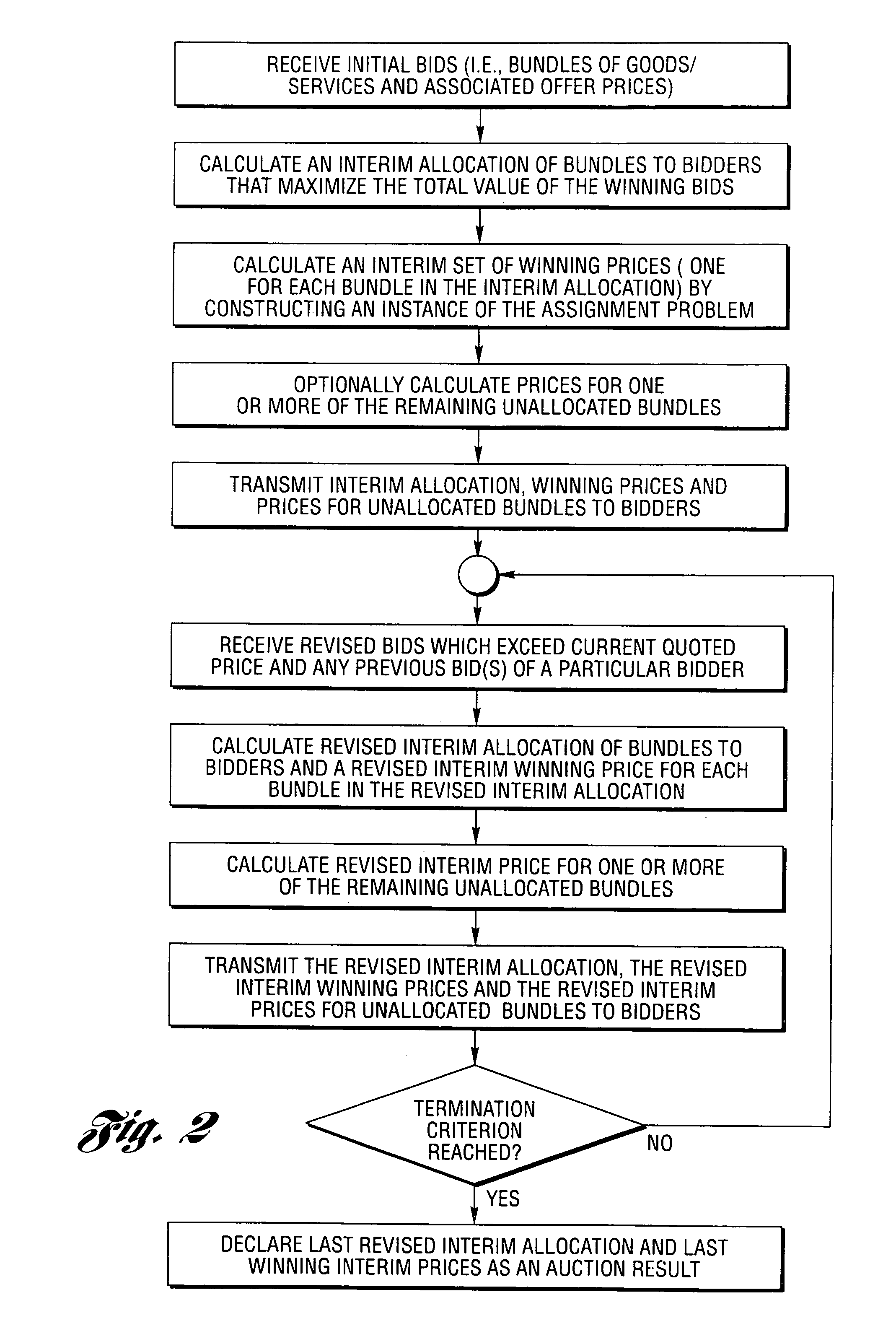Method and computer system for conducting a progressive, price-driven combinatorial auction
a technology of combinatorial auctions and computer systems, applied in the field of methods and computer systems for conducting progressive, price-driven combinatorial auctions, can solve the problems of inability to implement the auction in practice, imperfection of the gva, and inability to budg
- Summary
- Abstract
- Description
- Claims
- Application Information
AI Technical Summary
Benefits of technology
Problems solved by technology
Method used
Image
Examples
example
[0097]Consider the example in Table 4. The efficient allocation is to assign AB to bidder 2 and C to bidder 1. Bidder 3 gets nothing. This allocation has a social welfare of 13.
[0098]
TABLE 4An example with three bidders.ABCABACBCABCBidder 1665*107812Bidder 2332 8*5611Bidder 3421 7 6510
[0099]In order to construct equilibrium payments, the dummy good φ3 is introduced. Now, solve the linear programs LPlower and LPupper for the assignment subproblem in Table 5.
[0100]
TABLE 5The assignment problemABC1003Bidder 11050Bidder 2820Bidder 3710
[0101]The solution to LPlower for this problem is πAB=1, and, of course, πφ3=0. This leaves s1=4, s2=1, and S3=0. The final upper and lower equilibrium payment vectors are given in Table 6.
[0102]
TABLE 6Equilibrium payments.ABCABACBCABC{overscore (π)}*44386611π*42176510
[0103]FIG. 3 is a graph that shows the binding linear constraints for this example projected into the space πAB×πC. The constraints are labeled with the bidder whose valuations impose them (i...
PUM
 Login to View More
Login to View More Abstract
Description
Claims
Application Information
 Login to View More
Login to View More - R&D
- Intellectual Property
- Life Sciences
- Materials
- Tech Scout
- Unparalleled Data Quality
- Higher Quality Content
- 60% Fewer Hallucinations
Browse by: Latest US Patents, China's latest patents, Technical Efficacy Thesaurus, Application Domain, Technology Topic, Popular Technical Reports.
© 2025 PatSnap. All rights reserved.Legal|Privacy policy|Modern Slavery Act Transparency Statement|Sitemap|About US| Contact US: help@patsnap.com



